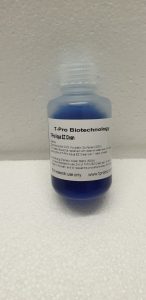Neurodegenerative disorders (NDD), and notably Alzheimer’s disease (AD), are one of the best challenges going through our present drugs and society as a result of of its rising incidence and the excessive burden imposed each on sufferers’ households and well being programs. Despite this, their correct diagnosis, principally carried out by cerebrospinal fluid (CSF) evaluation or neuroimaging methods, pricey, time-consuming, and unaffordable for most of the inhabitants, stays a posh activity. In this example, electrochemical biosensors are flourishing as promising various instruments for the easy, quick, and low-cost diagnosis of NDD/AD. This overview article gives the related scientific particulars of NDD/AD together with the carefully associated genetic (genetic mutations, polymorphisms of ApoE and particular miRNAs) and proteomic (amyloid-β peptides, complete and phosphorylated tau protein) biomarkers circulating principally in CSF. In addition, the article systematically enlightens a common view of the electrochemical affinity biosensors (principally aptasensors and immunosensors) reported in the previous two years for the dedication of such biomarkers. The completely different developed methods, analytical performances and functions are comprehensively mentioned. Recent advancements in sign amplification methodologies involving good designs and the use of nanomaterials and rational floor chemistries, in addition to the challenges that have to be struggled and the prospects in electrochemical affinity biosensing to deliver extra accessibility to NDD/AD diagnosis, prognosis, and follow-up, are additionally identified.
The vital danger of disease transmission has chosen for efficient immune-defense methods in insect societies. Division of labour, with people specialised in immunity-related duties, strongly contributes to forestall the unfold of ailments. A trade-off, nonetheless, could exist between phenotypic specialization to extend activity effectivity and upkeep of plasticity to deal with variable colony calls for. We investigated the extent of phenotypic specialization related to a particular activity by utilizing allogrooming in the honeybee, Apis mellifera, the place employee behaviour may decrease ectoparasites load. We adopted an built-in strategy to characterize the behavioural and physiological phenotype of allogroomers, by analyzing their habits (each at particular person and social community degree), their immunocompetence (bacterial clearance exams) and their chemosensory specialization (proteomics of olfactory organs). We discovered that allogroomers have increased immune capability in comparison with management bees, whereas they don’t differ in chemosensory proteomic profiles. Behaviourally, they don’t present variations in the duties carried out (other than allogrooming), whereas they clearly differ in connectivity inside the colonial social community, having a hig
Molecular and Functional Phenotypes of Human Bone Marrow-Derived Mesenchymal Stromal Cells Depend on Harvesting Techniques
Mesenchymal stromal cells (MSC) harvested in completely different tissues from the similar donor exhibit completely different phenotypes. Each phenotype isn’t solely characterised by a sure sample of cell floor markers, but additionally completely different mobile functionalities. Only lately had been completely different harvesting and processing methods discovered to contribute to this phenomenon as properly. This research was due to this fact set as much as examine proteomic and practical properties of human bone marrow-derived MSCs (hBM-MSC).
These had been taken from the similar tissue and donor web site however harvested both as aspirate or bone chip cultures. Both MSC populations had been profiled for MSC markers outlined by the International Society for Cellular Therapy (ISCT), MSC markers presently underneath dialogue and markers of explicit curiosity. While basic ISCT MSC markers didn’t present any vital distinction between aspirate and outgrowth hBM-MSCs, our further characterization panel revealed distinct patterns of differentially expressed markers. Furthermore, hBM-MSCs from aspirate cultures demonstrated a considerably increased osteogenic differentiation potential than outgrowth MSCs, which could possibly be confirmed utilizing a transcriptional strategy. Our comparability of MSC phenotypes obtained by completely different harvesting methods suggests the want of future standardized harvesting, processing and phenotyping procedures in order to realize higher comparability in the MSC area.

Urine Proteomic Study in OAB Patients-Preliminary Report.
Overactive bladder (OAB) is outlined by International Urogynecological Association (IUGA)/ International Continence Society (ICS) as urinary urgency, often accompanied by frequency and nocturia, with or with out urgency urinary incontinence, in the absence of urinary tract an infection (UTI) or other apparent pathology. The pathophysiology of OAB isn’t properly understood, nonetheless a quantity of completely different proteins and cytokines together with vascular cell adhesion molecule-1 (VCAM-1) had been discovered to be vital in regulating structural integrity of the bladder wall.
[Linking template=”default” type=”products” search=”GUINEA PIG SERUM:Azide Free Serum reagents” header=”2″ limit=”140″ start=”3″ showCatalogNumber=”true” showSize=”true” showSupplier=”true” showPrice=”true” showDescription=”true” showAdditionalInformation=”true” showImage=”true” showSchemaMarkup=”true” imageWidth=”” imageHeight=””]
Proteome evaluation could thus present vital info with regard to OAB and could assist in discovering novel diagnostic disease biomarkers. Sixteen Caucasian girls aged 32-78 had been included in the research. Patients had been positioned inside 2 teams: OAB group (n = 8) and management group (n = 8). Urine samples had been collected, instantly preserved in a protease inhibitor combination, and frozen at -80 ℃. All samples had been then additional processed in line with the isobaric tags for relative and absolute quantification (iTRAQ) handbook. Proteins had been labeled and analyzed in the mass spectrometer conjugated with liquid chromatograph (knowledge can be found through ProteomeXchange with the identifier PXD017799). There had been no statistically vital variations in demographic knowledge between management and OAB teams. VCAM-1 was the solely protein that reached statistical significance as a differentiating protein in each of our experiments assessing the proteomic structure in OAB sufferers. Studies involving a bigger group of sufferers could present additional info on urinary bladder proteomics.








